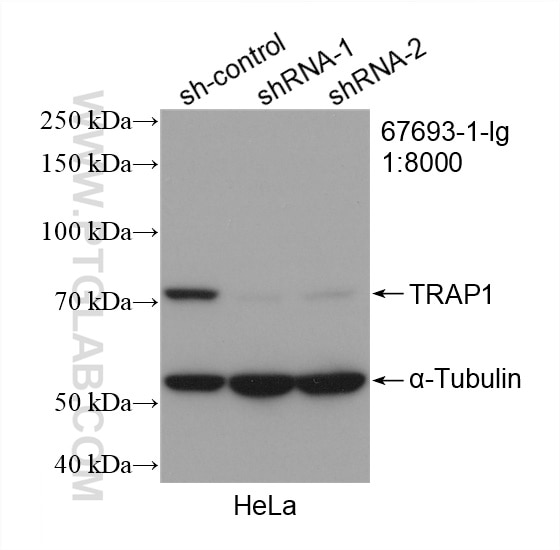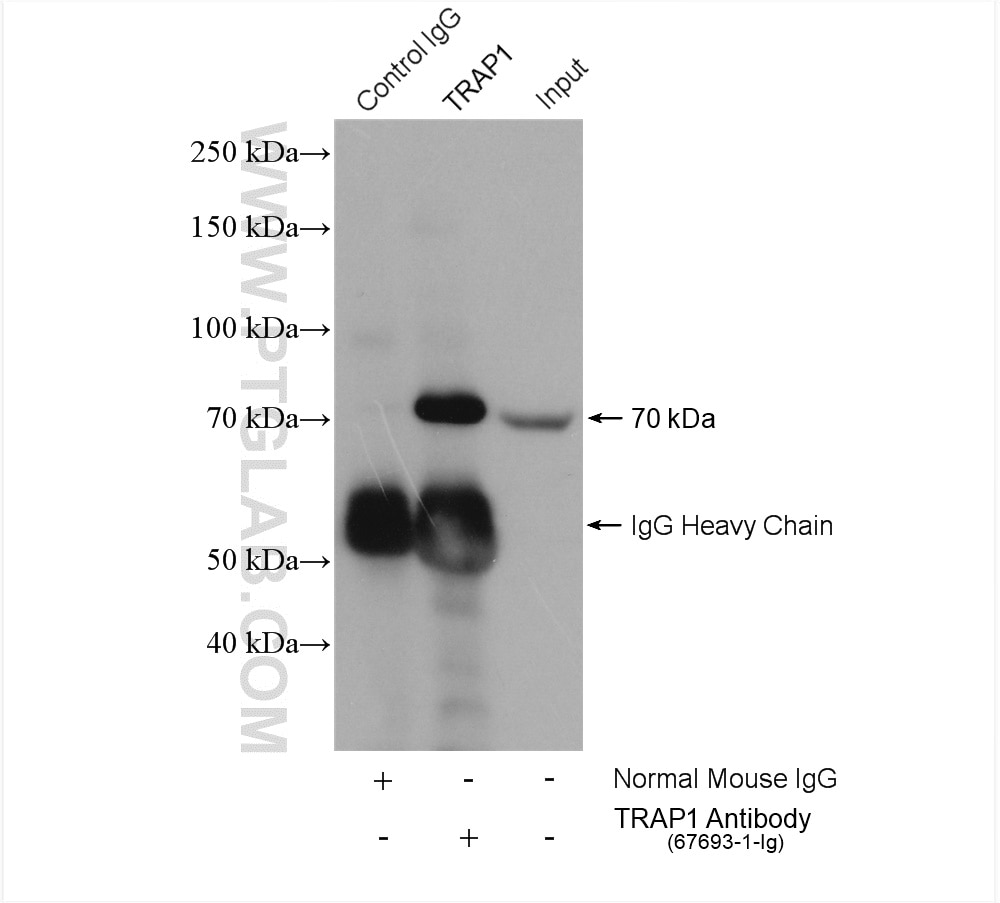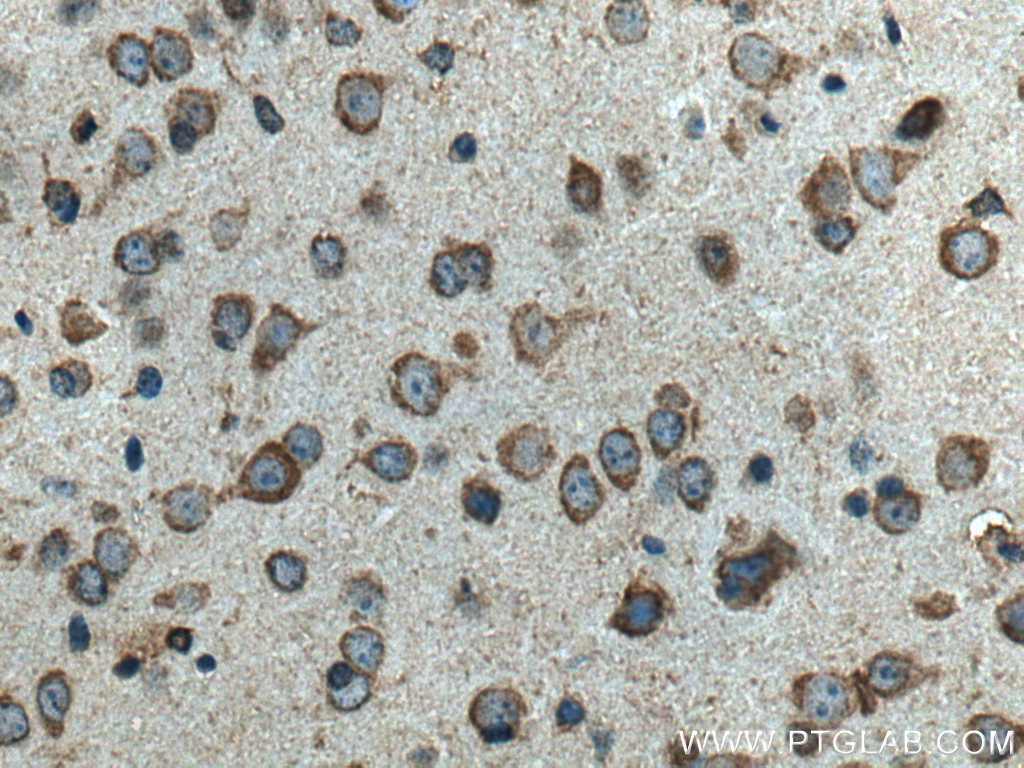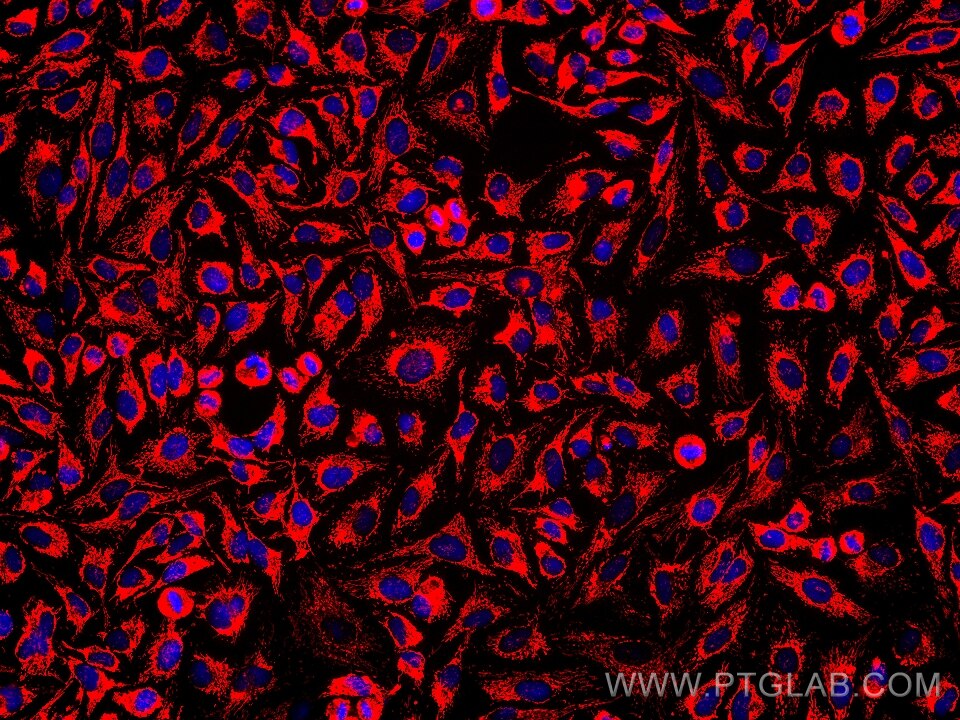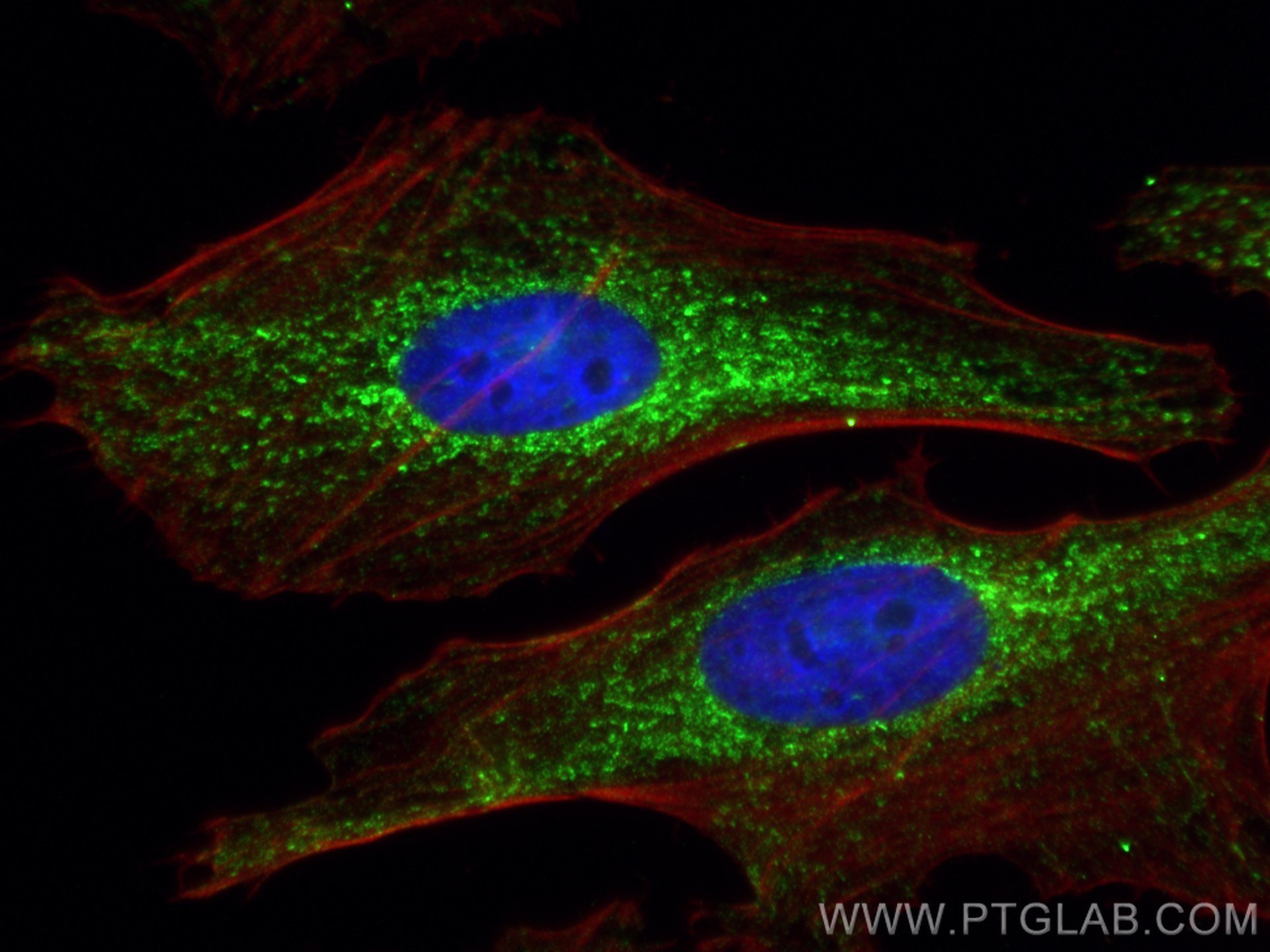Validation Data Gallery
Tested Applications
Recommended dilution
| Application | Dilution |
|---|---|
| It is recommended that this reagent should be titrated in each testing system to obtain optimal results. | |
Product Information
67693-1-PBS targets TRAP1 in WB, IHC, IF/ICC, IP, Indirect ELISA applications and shows reactivity with human, mouse samples.
| Tested Reactivity | human, mouse |
| Host / Isotype | Mouse / IgG1 |
| Class | Monoclonal |
| Type | Antibody |
| Immunogen | TRAP1 fusion protein Ag0400 相同性解析による交差性が予測される生物種 |
| Full Name | TNF receptor-associated protein 1 |
| Calculated molecular weight | 80 kDa |
| Observed molecular weight | 70-75 kDa |
| GenBank accession number | BC000406 |
| Gene Symbol | TRAP1 |
| Gene ID (NCBI) | 10131 |
| RRID | AB_2882886 |
| Conjugate | Unconjugated |
| Form | Liquid |
| Purification Method | Protein G purification |
| UNIPROT ID | Q12931 |
| Storage Buffer | PBS only , pH 7.3 |
| Storage Conditions | Store at -80°C. |
Background Information
TNF receptor-associated protein 1 (TRAP1, synonym: HSP75) is a member of the HSP90 family of molecular chaperones, and is expressed ubiquitously and located to mitochondria. A unique LxCxE motif in HSP75, but not in other HSP90 family members, appears to be important for binding to the simian virus 40 T-antigen-binding domain of hypophosphorylated Rb. Data also suggests that suppression of the expression of TRAP1 in mitochondria plays an important role in the induction of apoptosis caused via formation of reactive oxygen species (ROS).

